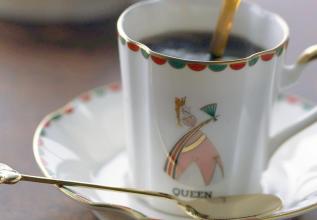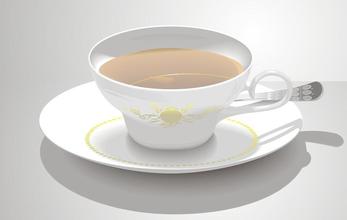Green coffee beans semi-washing treatment method planting process growth environment introduction
Green coffee beans semi-washing treatment method planting process growth environment introduction
Coffee is either dried naturally on the patio or by machine, or both. The treatment method is to spread the coffee cherries widely in the exposure field for two weeks, and sweep them several times a day with a rake to make the coffee beans dry more evenly. When dried, the beans are separated from the outer skin, the husked flesh and skin are removed by a huller, and then screened and classified into different grades. Both washing and drying produce the best quality coffee. Washable coffee generally has a distinct acidity and consistent flavor; dry coffee has a lower acidity and a more varied flavor. Colombia, Kenya, Costa Rica, Guatemala, Mexico, and Hawaii all use the water wash method. Countries including Brazil, Ethiopia, and Indonesia produce most of their coffee using the dry process. Coffee sifting and grading is determined by the size and consistency of the beans, as well as how many defective beans are in a pound of beans. Just like the best wines, specialty coffee is carefully processed and selected during production, as can be seen in the quality of the beans, because the product has unique characteristics that represent the origin, climate and grower's drying method: mild acidity and mild bitterness. Brazil, Ethiopia and Yemen use it. Cons: Weather-sensitive, defective beans and foreign matter mixed in. Coffee cherries that have been picked include just ripe, over-ripe, and under-ripe, all mixed together. If these coffee cherries are not treated separately, the quality of the coffee beans obtained is really unacceptable, because there are many impurities with poor taste. Therefore, these coffee cherries must be washed first and placed in a large tank full of water to prepare for preliminary classification. The best coffees have a higher density, so they sink into water. Over-ripened coffee cherries surface and are easy to classify. Remove the outer pulp from the coffee cherries and soak them in a large tank full of water. After fermentation, washed coffee will have a distinctive clear flavor. After fermentation, the beans are washed with water, then drained and dried in the sun or by machine. Finally, remove the skin and silver skin with a hulling machine, and then screen and divide the raw coffee beans into different grades. Remove the skin with water, and then dry them. This is a relatively new and rare method. This method is only suitable for certain areas in certain countries, where there is a long drying period. The coffee produced by this process is sticky and the slime is not removed as it ferments in the tank. Therefore, the coffee produced by this semi-washing process contains the characteristics of both washing and drying methods. The acidity, sweetness, flavor, and aroma of this coffee are quite good; the disadvantage is that the coffee does not taste as strong as coffee produced by pure drying or washing

Important Notice :
前街咖啡 FrontStreet Coffee has moved to new addredd:
FrontStreet Coffee Address: 315,Donghua East Road,GuangZhou
Tel:020 38364473
- Prev

Introduction to the producing area of Coffee Flavor description Grinding scale in Yega Ficher Manor, Ethiopia
Ethiopian coffee flavor description grinding scale varieties introduce the grades of Ethiopian coffee: Ethiopian washed coffee Yega Sheffield G1 G2 Sidamo (Yirgacheffe, Sidamo) the highest grades are Grade 2 and 3 (G2, G3), while sun-processed coffee in eastern Ethiopia is mostly Grade 4 or Grade 5 (G4, G5). In many affections
- Next

Flavor description of Manning Coffee beans in Indonesia; introduction to the characteristics of regional treatment methods for manor production
Indonesia Manning coffee bean flavor description taste Manor production regional treatment characteristics Manning has always been the most unique bitterness to show its most unique sweetness, like the joys and sorrows of life. No matter how much sugar you put in, you can't hide the bitterness. When you first tasted her, it was amazing. But the charming aroma makes us unable to control our crazy infatuation with her. Her sufferings are like flowers.
Related
- Detailed explanation of Jadeite planting Land in Panamanian Jadeite Manor introduction to the grading system of Jadeite competitive bidding, Red bid, Green bid and Rose Summer
- Story of Coffee planting in Brenka region of Costa Rica Stonehenge Manor anaerobic heavy honey treatment of flavor mouth
- What's on the barrel of Blue Mountain Coffee beans?
- Can American coffee also pull flowers? How to use hot American style to pull out a good-looking pattern?
- Can you make a cold extract with coffee beans? What is the right proportion for cold-extracted coffee formula?
- Indonesian PWN Gold Mandrine Coffee Origin Features Flavor How to Chong? Mandolin coffee is American.
- A brief introduction to the flavor characteristics of Brazilian yellow bourbon coffee beans
- What is the effect of different water quality on the flavor of cold-extracted coffee? What kind of water is best for brewing coffee?
- Why do you think of Rose Summer whenever you mention Panamanian coffee?
- Introduction to the characteristics of authentic blue mountain coffee bean producing areas? What is the CIB Coffee Authority in Jamaica?

